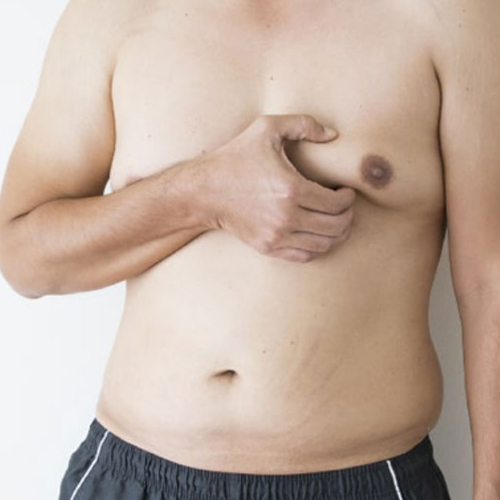Gynecomastia, often referred to as male breast enlargement, is a condition where the glandular tissue in the male breast becomes enlarged. This can occur in one or both breasts and is often a source of embarrassment and distress for those affected. In this blog post, we will explore what gynecomastia is, its causes, symptoms, and the various treatment options available.
What is Gynecomastia?
Gynecomastia is the benign enlargement of male breast tissue, resulting in a more feminine breast appearance. It is different from pseudogynecomastia, which is the enlargement of the male breast due to excess fat rather than glandular tissue. Gynecomastia can affect males of all ages, from newborns to older adults.
Causes of Gynecomastia
Gynecomastia can be caused by various factors, including hormonal imbalances, medical conditions, medications, and lifestyle factors:
-
Hormonal Imbalances
- The most common cause of gynecomastia is an imbalance between the hormones estrogen and testosterone. Estrogen, which promotes breast tissue growth, is typically present in small amounts in males. When the levels of estrogen increase or the levels of testosterone decrease, gynecomastia can occur.
-
Medications
- Certain medications can cause gynecomastia as a side effect. These include anti-androgens used to treat prostate conditions, anabolic steroids, some antidepressants, anti-anxiety medications, antibiotics, and heart medications.
-
Medical Conditions
- Various health conditions can lead to gynecomastia, including hypogonadism (reduced hormone production), hyperthyroidism (overactive thyroid), kidney failure, liver disease, and tumors of the testes or adrenal glands.
-
Substance Use
- The use of substances such as alcohol, marijuana, heroin, and anabolic steroids can contribute to the development of gynecomastia.
-
Natural Hormonal Changes
- Gynecomastia is common during infancy, puberty, and older age due to natural hormonal changes that occur during these life stages.
Symptoms of Gynecomastia
The primary symptom of gynecomastia is the enlargement of the breast tissue. Other symptoms may include:
- Tenderness or pain in the breasts
- Swelling in the breast area
- Breast tissue that feels firm or rubbery
- Nipple discharge (rare)
Diagnosing Gynecomastia
To diagnose gynecomastia, a healthcare provider will perform a physical examination and review the patient's medical history. Additional tests may be conducted to determine the underlying cause, including:
- Blood tests to check hormone levels
- Imaging tests such as mammograms, ultrasounds, or MRIs
- Tissue biopsy if there is a suspicion of breast cancer
Treatment Options for Gynecomastia
The treatment for gynecomastia depends on the underlying cause and the severity of the condition. In some cases, gynecomastia may resolve on its own without treatment. However, for persistent or bothersome cases, the following treatments may be considered:
-
Medications
- Medications that adjust hormone levels can be effective in treating gynecomastia. Examples include selective estrogen receptor modulators (SERMs) like tamoxifen and aromatase inhibitors like anastrozole.
-
Lifestyle Changes
- Reducing the use of substances that can cause gynecomastia, such as alcohol and recreational drugs, can help. Additionally, maintaining a healthy weight through diet and exercise may reduce the appearance of enlarged breasts.
-
Surgery
- Surgical options are available for severe or persistent gynecomastia. The most common procedures are liposuction, which removes excess fat, and mastectomy, which removes glandular breast tissue. These surgeries can be performed using minimally invasive techniques to reduce scarring and recovery time.
-
Observation
- In cases where gynecomastia is mild and not causing significant distress, a "watchful waiting" approach may be recommended. This involves regular monitoring by a healthcare provider to see if the condition improves on its own.
Psychological Impact and Support
Gynecomastia can have a significant psychological impact, leading to feelings of embarrassment, anxiety, and low self-esteem. It is important for individuals affected by this condition to seek support from healthcare providers, mental health professionals, and support groups. Addressing the emotional aspects of gynecomastia is crucial for overall well-being.


